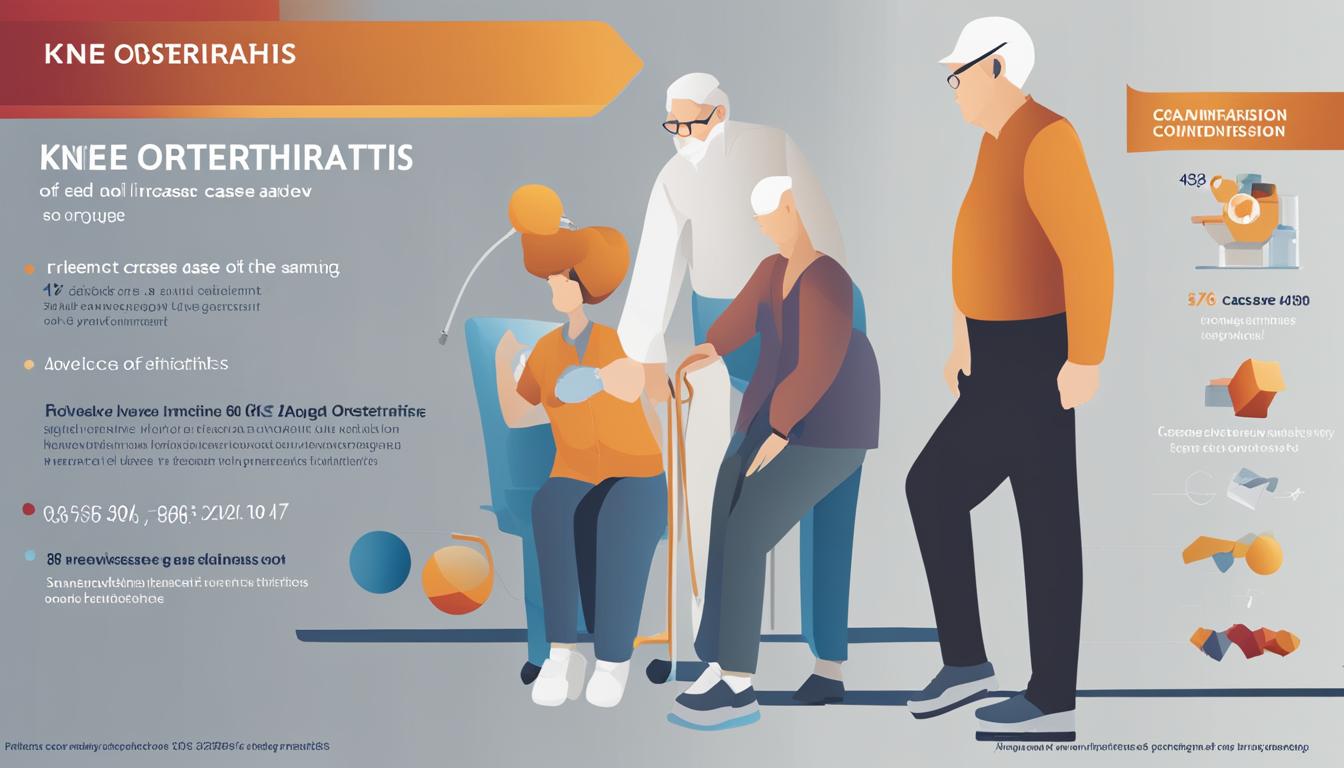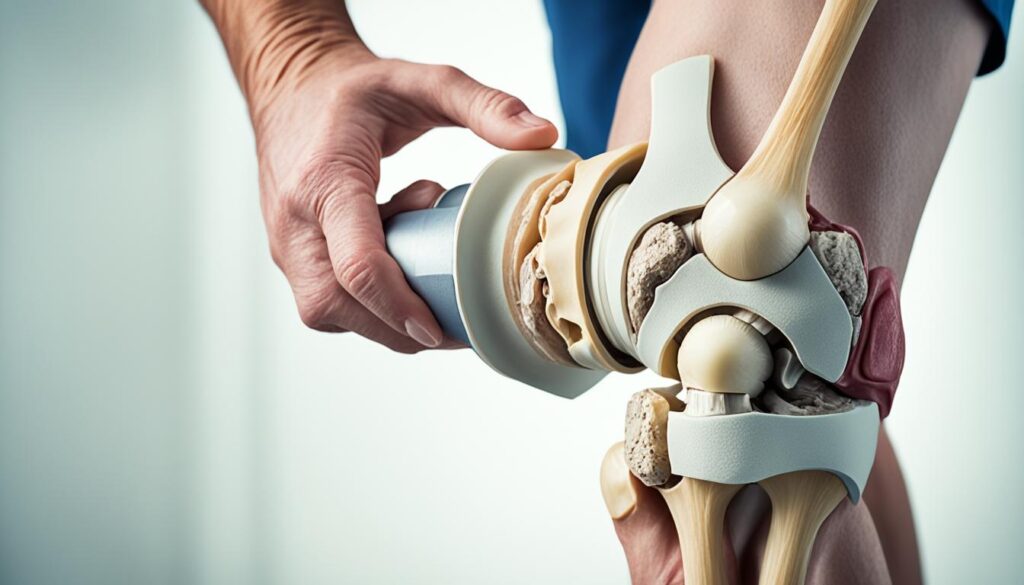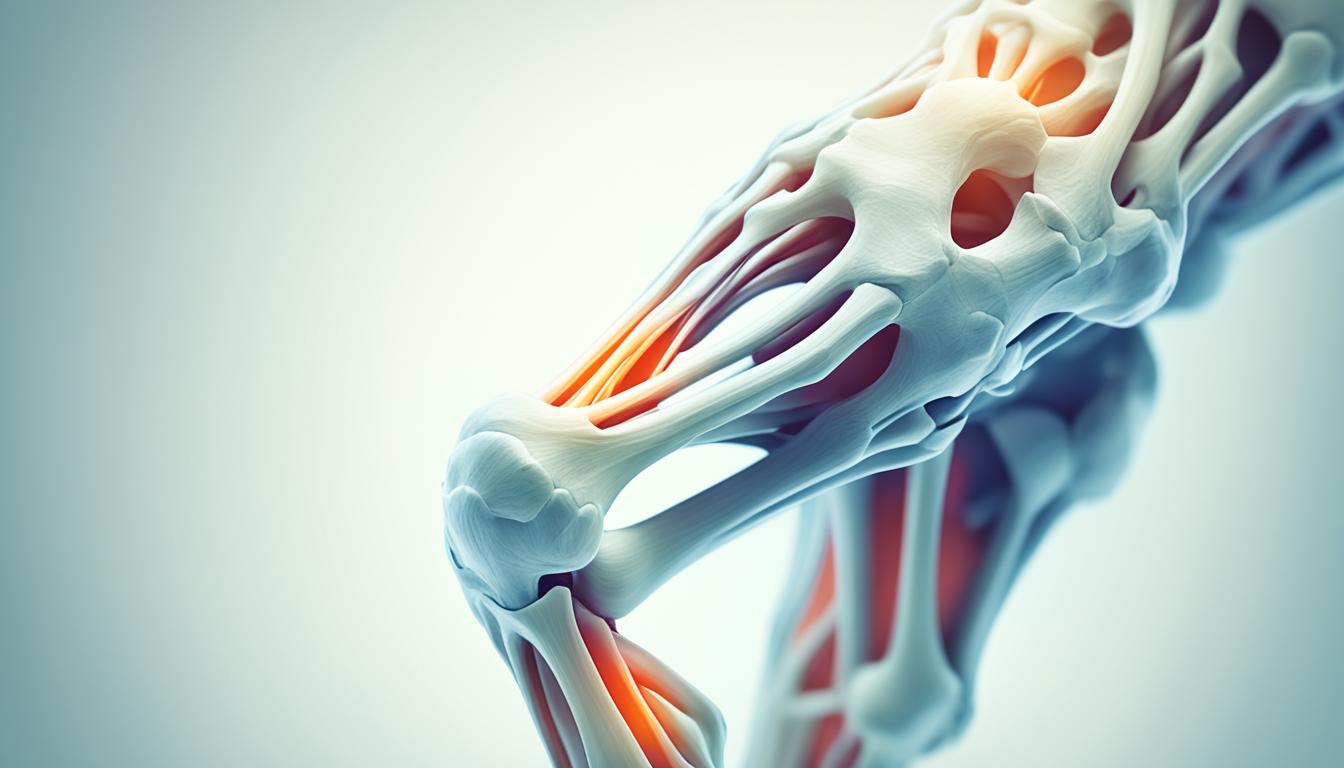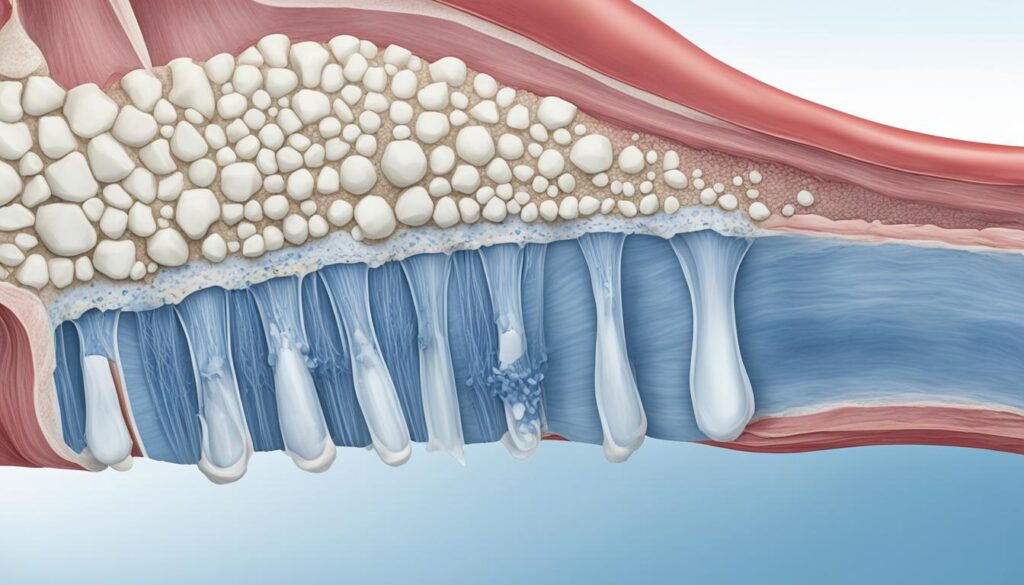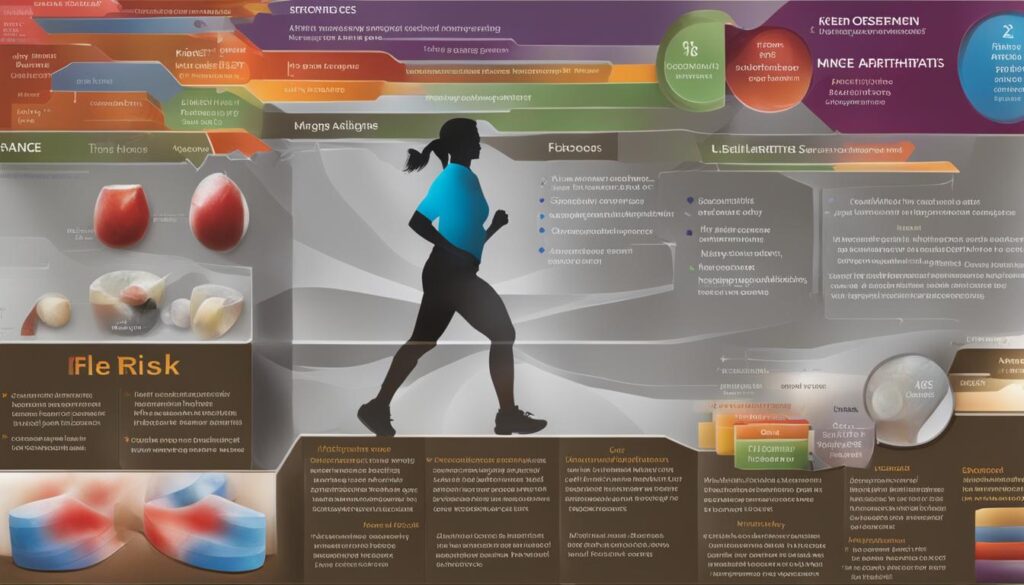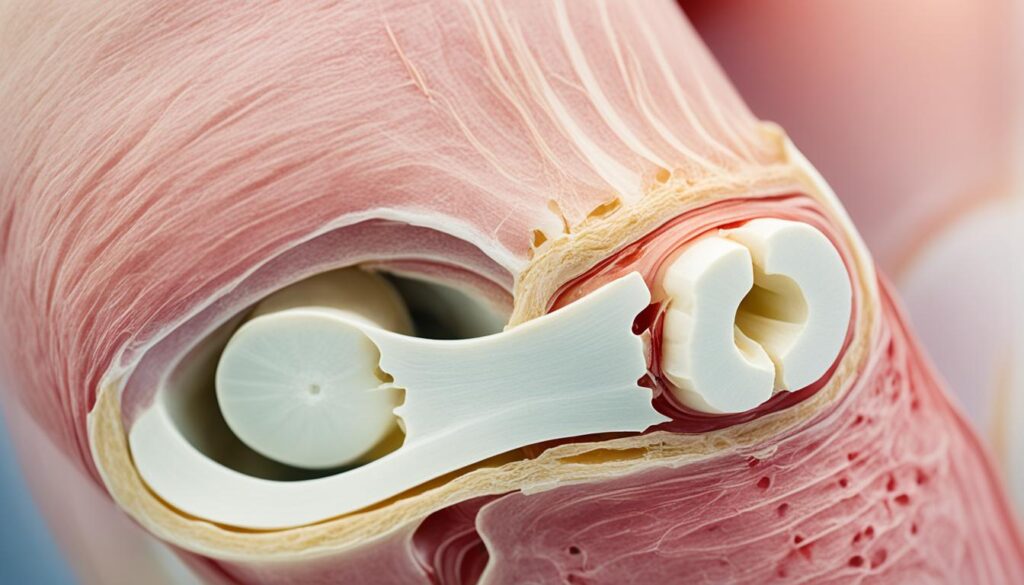We are here to provide you with important information regarding knee osteoarthritis, focusing on the World Health Organization (WHO) data for 2023-2024. Knee osteoarthritis is a prevalent condition affecting millions of Americans, with the prevalence expected to increase in the coming years.
Knee osteoarthritis is a progressive disease that leads to the destruction of cartilage, resulting in painful and swollen joints. Understanding the latest guidelines and management strategies is crucial for maintaining better joint health.
In this comprehensive guide, we will explore the risk factors and symptoms associated with knee osteoarthritis, delve into the diagnosis and treatment options available, and discuss the role of nonsteroidal anti-inflammatory drugs (NSAIDs) in managing knee osteoarthritis pain and inflammation.
Furthermore, we will examine other medications that are used in knee osteoarthritis treatment, as well as nonpharmacologic therapies that play a vital role in improving joint function and reducing pain.
In severe cases of knee osteoarthritis, surgical options may be considered, and we will cover the various procedures available.
Join us as we explore the latest research, prevention strategies, and advancements in knee osteoarthritis management. Together, we can effectively manage knee osteoarthritis, improving joint health and enhancing overall quality of life.
Risk Factors and Symptoms of Knee Osteoarthritis
When it comes to knee osteoarthritis, understanding the risk factors and recognizing the associated symptoms is crucial for early diagnosis and intervention. Certain factors can increase the likelihood of developing knee osteoarthritis. These include:
- Age: Individuals older than 50 years are more prone to knee osteoarthritis.
- Obesity: Excess weight puts added stress on the knee joints, contributing to cartilage damage.
- Joint injury: Previous injuries to the knee, such as fractures or ligament tears, can accelerate the development of osteoarthritis.
- Joint overuse: Repetitive activities or occupations that involve frequent kneeling, squatting, or heavy lifting can lead to knee osteoarthritis.
- Gender: Females are more likely to develop knee osteoarthritis compared to males.
Recognizing the symptoms of knee osteoarthritis is crucial for timely diagnosis and treatment. Common symptoms include:
- Painful joints: Individuals with knee osteoarthritis often experience pain, which can range from mild to severe.
- Stiffness: The affected knee joint may feel stiff, especially after periods of rest or inactivity.
- Swelling: Inflammation can cause swelling in the knee joint, leading to discomfort and reduced mobility.
- Decreased range of motion: Knee osteoarthritis can limit the ability to fully bend or straighten the knee.
- Achy pain during movement: Deep, achy pain is a common symptom during activities that involve the affected knee joint.
- Improved symptoms with rest: Pain and discomfort generally subside with rest and can worsen with physical activity.
Early recognition of these symptoms can help individuals seek appropriate medical attention and implement management strategies to improve joint health and overall quality of life.
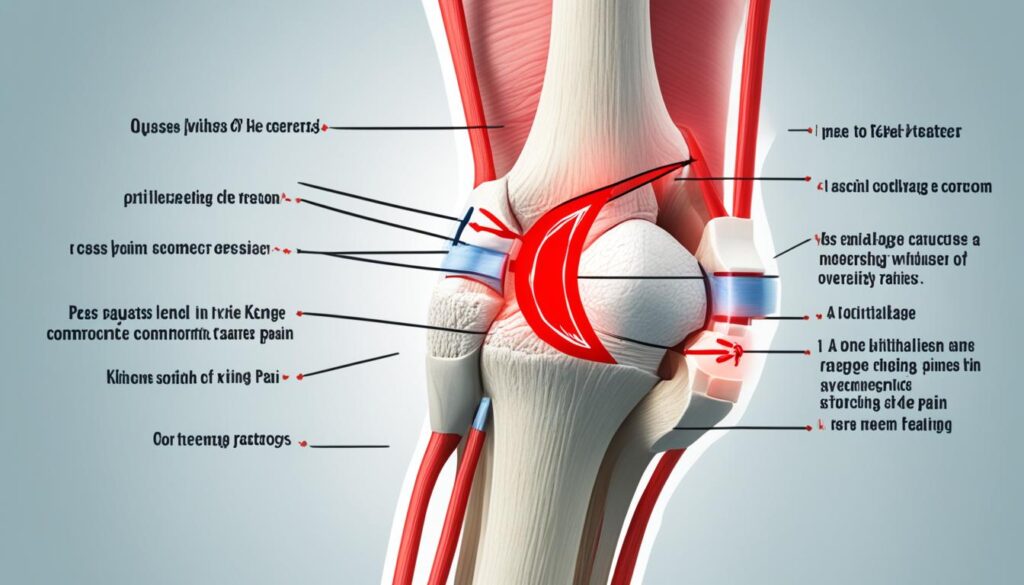
| Risk Factors | Symptoms |
|---|---|
| Age (older than 50 years) | Painful joints |
| Obesity | Stiffness |
| Joint injury | Swelling |
| Joint overuse | Decreased range of motion |
| Gender (female) | Achy pain during movement |
| Improved symptoms with rest |
Diagnosis and Treatment Options for Knee Osteoarthritis
Diagnosis of knee osteoarthritis involves a combination of symptoms assessment, physical examination, and imaging tests such as x-rays and MRIs. Once diagnosed, there are various treatment options available. The American College of Rheumatology (ACR) and the Arthritis Foundation provide guidelines for the management of knee osteoarthritis. Treatment options include oral and topical nonsteroidal anti-inflammatory drugs (NSAIDs), duloxetine, opioids, glucosamine, and chondroitin. In some cases, intra-articular corticosteroid injections may be recommended. Nonpharmacologic therapies such as exercise, weight loss, and self-management programs are also beneficial in managing knee osteoarthritis.
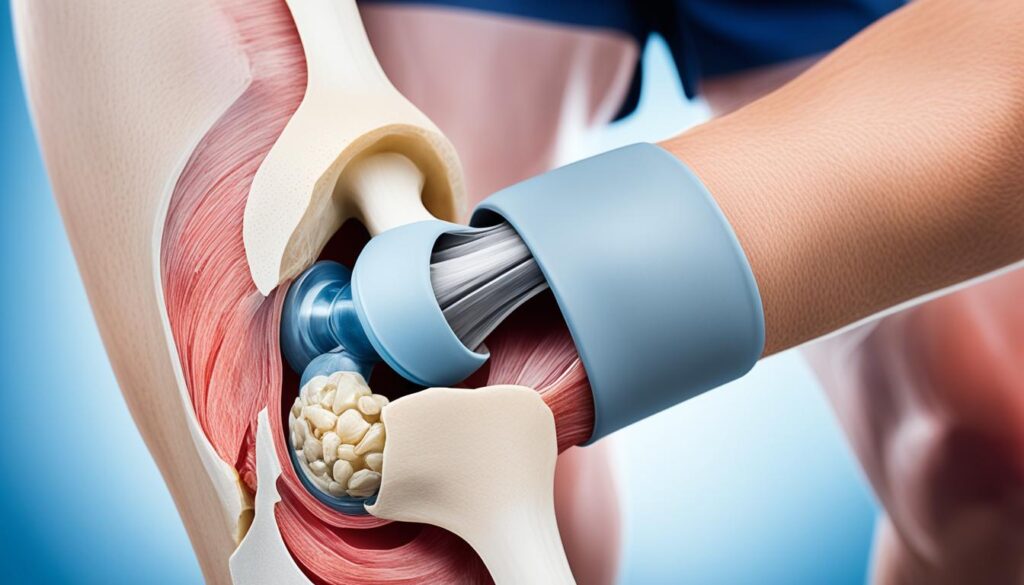
When diagnosing knee osteoarthritis, healthcare professionals utilize a comprehensive approach. They start by evaluating the patient’s symptoms, conducting a thorough physical examination, and using imaging tests to confirm the diagnosis. X-rays are commonly used to assess joint damage, while MRIs provide detailed images of the cartilage and soft tissues.
Once knee osteoarthritis is diagnosed, treatment options are tailored to meet the needs of each patient. The ACR and the Arthritis Foundation provide evidence-based guidelines for managing knee osteoarthritis, ensuring that patients receive the most effective and appropriate care.
| Treatment Options | Description |
|---|---|
| Oral and Topical NSAIDs | These medications help reduce pain and inflammation in the joints. Topical NSAIDs provide localized relief, while oral NSAIDs are taken systemically. |
| Duloxetine | An antidepressant that can also alleviate pain associated with knee osteoarthritis. |
| Opioids | Prescribed when other treatments do not adequately manage pain. Opioids should be used cautiously due to potential side effects and dependency risks. |
| Glucosamine and Chondroitin | These supplements may help manage symptoms and slow down the progression of knee osteoarthritis. |
| Intra-Articular Corticosteroid Injections | Aimed at reducing pain and inflammation directly in the affected joint. |
Nonpharmacologic therapies play a significant role in managing knee osteoarthritis. Exercise, including low-impact activities like walking and swimming, helps strengthen the muscles supporting the knee joint. Weight loss, if necessary, reduces the load on the joint, easing pain and improving mobility. Self-management programs educate patients on techniques to manage symptoms, optimize medication use, and adopt healthy lifestyle habits.
The Role of NSAIDs in Knee Osteoarthritis Management
Nonsteroidal anti-inflammatory drugs (NSAIDs) play a vital role in the management of knee osteoarthritis pain and inflammation. These medications are commonly used to provide relief and improve the quality of life for individuals suffering from knee osteoarthritis.
There are two main forms of NSAIDs that are recommended for the treatment of knee osteoarthritis: topical NSAIDs and oral NSAIDs. These options have been endorsed by the American College of Rheumatology (ACR) for their effectiveness in managing knee osteoarthritis symptoms.
Topical NSAIDs:
Topical NSAIDs are a preferred choice for knee osteoarthritis management due to their ability to provide localized pain relief with minimal systemic side effects. These medications are typically applied directly to the affected area, targeting the source of the pain and inflammation. The use of topical NSAIDs can help alleviate knee pain, reduce swelling, and improve joint function for individuals with knee osteoarthritis.
Oral NSAIDs:
Oral NSAIDs are available over-the-counter or by prescription and are also effective in managing knee osteoarthritis pain. These medications work by reducing inflammation, relieving pain, and improving joint mobility. However, it is important to be cautious when using oral NSAIDs as they can have potential side effects and contraindications, especially for individuals with comorbidities. It is advisable to consult with a healthcare professional before starting oral NSAIDs as a part of knee osteoarthritis management.
When incorporating NSAIDs into knee osteoarthritis management, it is essential to consider individual needs and discuss the potential benefits and risks with a healthcare professional. By adhering to the recommended dosage and usage instructions, individuals with knee osteoarthritis can experience effective pain relief and improved joint function.
Other Medications for Knee Osteoarthritis Treatment
In addition to NSAIDs, there are other medications that may be used in the treatment of knee osteoarthritis. These alternative options can be considered based on individual patient needs and preferences, as well as the severity of the condition. Let’s explore some of the other medications commonly used:
1. Acetaminophen
Acetaminophen, also known as paracetamol, is a widely used pain reliever. Although it is generally less effective than NSAIDs in managing knee osteoarthritis pain and inflammation, it may be recommended for patients who cannot take NSAIDs due to contraindications or allergies. It is important to follow the recommended dosage and consult with a healthcare professional before using acetaminophen.
2. Duloxetine
Duloxetine is a medication primarily used for treating depression and anxiety. However, studies have shown that it can also provide pain relief in knee osteoarthritis. Duloxetine works by affecting certain chemicals in the brain that are involved in pain perception. It is important to discuss the potential risks and benefits of using duloxetine with a healthcare professional.
3. Tramadol and Other Opioids
In cases where other treatments have been ineffective in managing knee osteoarthritis pain, healthcare professionals may consider prescribing opioids such as tramadol. Opioids can provide powerful pain relief, but they also carry a risk of dependence and other side effects. Therefore, their use should be closely monitored and limited to short-term or acute situations.
It is crucial to work closely with a healthcare professional to determine the most appropriate medication for knee osteoarthritis treatment. Individual factors such as overall health, medical history, and the presence of other conditions should be taken into account. The goal is to find a medication that effectively manages pain while minimizing potential risks and side effects.
Summary of Other Medications for Knee Osteoarthritis Treatment
| Medication | Purpose | Considerations |
|---|---|---|
| Acetaminophen | Pain relief | Less effective than NSAIDs |
| Duloxetine | Pain relief and affects pain perception | Primarily used for depression and anxiety |
| Tramadol and other opioids | Powerful pain relief | Risk of dependence and side effects |
Nonpharmacologic Therapies for Knee Osteoarthritis
In addition to medication, nonpharmacologic therapies play a crucial role in the management of knee osteoarthritis. These interventions focus on improving joint mobility, reducing pain, and enhancing overall quality of life for individuals with knee osteoarthritis.
Regular Exercise
Regular exercise is highly recommended for individuals with knee osteoarthritis. Activities such as walking, strength training, and water aerobics can help improve joint mobility, strengthen supporting muscles, and reduce pain. Engaging in low-impact exercises minimizes stress on the knee joints, allowing for increased flexibility and enhanced functional movement.
Weight Loss
Weight loss is an essential component of knee osteoarthritis management. Excess weight puts additional strain on the knee joints, exacerbating pain and reducing mobility. By achieving and maintaining a healthy weight, individuals can relieve pressure on their knees, decrease pain, and improve overall joint function.
Assisted Devices
Assisted devices such as canes, knee braces, and hand orthoses may be recommended to provide additional support and improve joint function for individuals with knee osteoarthritis. These devices can help reduce pain, stabilize the knee joint, and enhance mobility, allowing individuals to perform daily activities with greater ease.
Self-Management Programs and Patient Education
Self-management programs and patient education are valuable resources for individuals with knee osteoarthritis. These programs provide guidance on lifestyle modifications, medication use, exercise routines, and weight loss goals. By actively participating in their own care, individuals can make informed decisions, effectively manage their knee osteoarthritis, and improve their overall quality of life.
By adopting these nonpharmacologic therapies in combination with medication, individuals with knee osteoarthritis can enhance their overall well-being and effectively manage their condition. These strategies not only alleviate pain and improve joint function but also empower individuals to actively participate in their own knee osteoarthritis management.
Surgical Options for Severe Knee Osteoarthritis
In cases where conservative treatments are not sufficient, surgical options may be considered for severe knee osteoarthritis. These surgical interventions aim to alleviate pain, restore function, and improve the patient’s quality of life.
Arthroscopic Surgeries
One surgical option for knee osteoarthritis is arthroscopy. This minimally invasive procedure involves inserting a small camera, called an arthroscope, into the knee joint through small incisions. The surgeon can then use specialized tools to repair damaged cartilage, remove loose fragments, or smooth rough surfaces. Arthroscopy can also be used for cartilage resurfacing, where damaged cartilage is smoothed or replaced with healthy tissue.
Joint Replacement Surgeries (Arthroplasty)
In cases where the knee joint is significantly damaged, joint replacement surgeries may be recommended. This procedure involves removing the damaged joint surfaces and replacing them with artificial implants, known as prosthetic joints. The most common type of joint replacement surgery for knee osteoarthritis is a total knee replacement (TKR), where both the femoral and tibial components of the knee joint are replaced. Partial knee replacement (PKR), where only the affected part of the knee joint is replaced, may be considered in certain cases.
Osteotomy
In some cases, where the osteoarthritis is confined to one side of the knee joint, an osteotomy may be recommended. This procedure involves cutting and realigning the bones around the knee joint to redistribute the load and relieve pressure on the damaged area. Osteotomy aims to delay or prevent the need for joint replacement surgery, particularly in younger patients with good bone quality.
Joint Fusion (Arthrodesis)
Joint fusion is another surgical option for severe knee osteoarthritis. This procedure involves permanently fusing the bones in the knee joint together, eliminating the joint and creating a single bone. Joint fusion is typically reserved for patients who are not suitable candidates for joint replacement surgery or for those who require significant stability in the joint, such as in cases involving severe deformities or infections.
It is important to note that the choice of surgical treatment for knee osteoarthritis depends on various factors, including the severity of the condition, the patient’s overall health, and their specific needs and goals. A thorough evaluation and consultation with an orthopedic surgeon is essential to determine the most appropriate surgical option.
Note: The image above illustrates surgical options for knee osteoarthritis.
Conclusion
Knee osteoarthritis is a common condition that affects millions of individuals. As ongoing research in the field of knee osteoarthritis continues, new treatment options and prevention strategies are being developed. It is crucial for healthcare professionals and patients alike to stay informed about the latest guidelines and advancements in knee osteoarthritis management.
By adopting a multidisciplinary approach that combines pharmacologic and nonpharmacologic interventions, we can effectively manage knee osteoarthritis and improve joint health. This means utilizing medications such as nonsteroidal anti-inflammatory drugs (NSAIDs), exploring other medications like acetaminophen or duloxetine, and considering surgical options when necessary.
Furthermore, nonpharmacologic therapies play a vital role in knee osteoarthritis management. Regular exercise, weight loss, and the use of assisted devices can all contribute to better joint mobility and reduce stress on the knee joints. Self-management programs and patient education empower individuals to take an active role in their knee osteoarthritis care.
As knee osteoarthritis research progresses, healthcare professionals and patients must work together to improve knee osteoarthritis healthcare. By staying up to date with the latest research and guidelines, we can continue to refine our approaches to prevention, treatment, and overall management, ultimately enhancing the quality of life for those living with knee osteoarthritis.
FAQ
What is knee osteoarthritis and how prevalent is it?
Knee osteoarthritis is a progressive condition that leads to the destruction of cartilage in the knee joints, causing pain and swelling. It is a common condition affecting millions of Americans. According to the World Health Organization (WHO) data for 2023-2024, the prevalence of knee osteoarthritis is expected to increase.
What are the risk factors and symptoms of knee osteoarthritis?
Risk factors for knee osteoarthritis include age (older than 50 years), obesity, joint injury, joint overuse, and gender (female). Symptoms commonly include painful, stiff, and swollen joints, decreased range of motion, and deep, achy pain during movement that improves with rest.
How is knee osteoarthritis diagnosed and what are the treatment options?
Diagnosis involves assessing symptoms, physical examination, and imaging tests such as x-rays and MRIs. Treatment options include oral and topical nonsteroidal anti-inflammatory drugs (NSAIDs), duloxetine, opioids, glucosamine, chondroitin, intra-articular corticosteroid injections, as well as nonpharmacologic therapies such as exercise, weight loss, and self-management programs.
What is the role of NSAIDs in knee osteoarthritis management?
Nonsteroidal anti-inflammatory drugs (NSAIDs) are commonly used to manage pain and inflammation in knee osteoarthritis. Topical NSAIDs provide localized pain relief with minimal systemic side effects, while oral NSAIDs are effective for managing knee osteoarthritis pain. It’s important to consider potential side effects and contraindications.
What are the other medications used in knee osteoarthritis treatment?
Other medications used in knee osteoarthritis treatment include acetaminophen, duloxetine, and opioids. Acetaminophen may be recommended for patients who cannot take NSAIDs, duloxetine provides pain relief, and opioids may be considered when other treatments are ineffective. It’s important to discuss potential risks and benefits with a healthcare professional.
What are the nonpharmacologic therapies for knee osteoarthritis?
Nonpharmacologic therapies play a crucial role in knee osteoarthritis management. Regular exercise, weight loss, and self-management programs can help improve joint mobility and strengthen supporting muscles. Assisted devices like canes, knee braces, or hand orthoses may provide additional support. Patient education about OA and lifestyle changes are also beneficial.
What are the surgical options for severe knee osteoarthritis?
In severe cases, surgical options may be considered. Arthroscopic surgeries, such as cartilage repair and resurfacing, address damaged cartilage and bone in the knee joint. Joint replacement surgeries involve replacing the damaged joint with a prosthetic joint. Osteotomy is a procedure that involves cutting and realigning the bone, and joint fusion involves fusing the bones in the joint together.
How can knee osteoarthritis be effectively managed?
Knee osteoarthritis can be effectively managed through a multidisciplinary approach that includes both pharmacologic and nonpharmacologic interventions. Staying informed about the latest guidelines and advancements, adopting a healthy lifestyle, and actively participating in self-management programs can improve joint health and overall quality of life.
